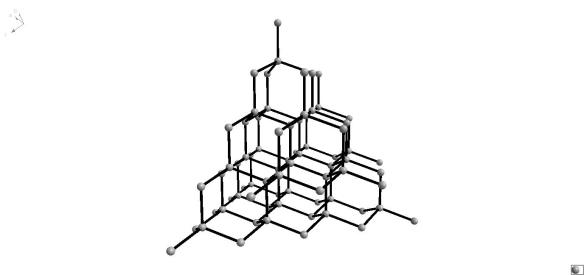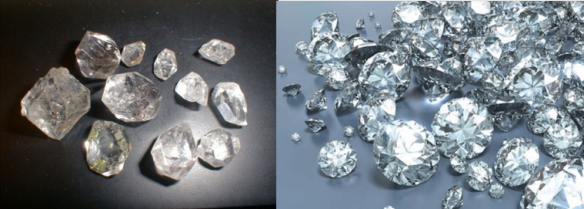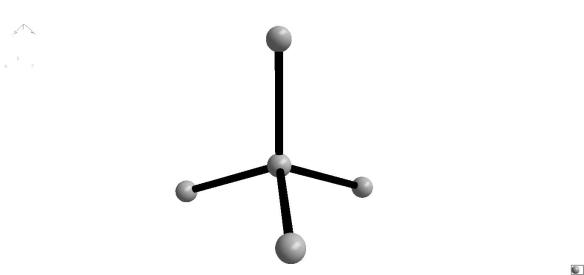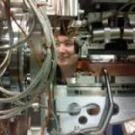April Birthstone: Unlucky for some … Diamond
Helen Brand outlines a downside to being born in April:
What does it look like?

This picture was drawn using Diamond structure visualisation software
What is it?
If, like me, you are born in April then you learn to live with the fact that no one is going to give you jewellery made of your birthstone for your birthday. That's because the birthstone of April is Diamond.
The cost and popularity of diamond has risen steadily since the 19th Century thanks to improvements in technologies for cutting and finishing these stones as well as innovative advertising campaigns by diamond companies. Coloured diamonds occur naturally, e.g. the famous blue "Hope diamond", thanks to impurities within the crystal structure. The Hope diamond is blue from boron impurities. As well as in jewellery, diamond is used as an abrasive, coating the edges of drill-bits and saws and other tools.

Images of both uncut (l) and cut (r) diamonds.
Diamonds are rare commodities and they form at high pressures and temperatures at around 150 km below the surface of the Earth. They are brought close to the surface by deep volcanic eruptions.
Diamond comes from the Greek word for "unbreakable", a reference to the extreme hardness of diamonds. Indeed, diamond has the highest hardness and thermal conductivity of any bulk material. The hardness of diamonds is all thanks to the crystal structure. As the structure picture shows, diamond is composed of only C atoms. These carbon atoms are bonded together into tetrahedra (see below). The covalent carbon bonds in the diamond structure are very strong and require a lot of energy to break them.

Carbon tetrahedra in diamond
Synthetic diamonds have long been in demand for industrial applications of diamonds for tools. In the 1940s work began in earnest to try and develop a synthetic method of producing diamonds. In 1953 they succeeded and the first reproducible synthesis was designed. This synthesis can produce both industrial grade diamonds and gem-quality diamonds. In some cases, even a gem expert cannot tell the difference by eye between a natural and synthetic diamond!
Where did the structure come from?
Diamond was one of the first structures to be described by W. L. and W. H. Bragg, but the structure has been worked on a lot subsequently. The carbon-carbon bonds in diamond were described in 1944 by Riley and published in Nature but this particular structure was published by Wyckoff in 1963.






